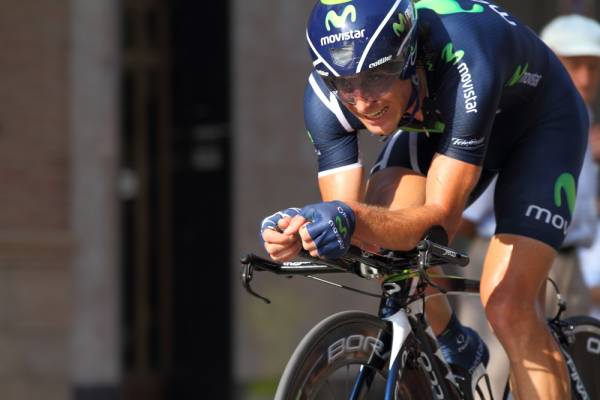This week I came across an interesting review paper published back in 2005 in Sports Medicine. It’s a review and summary of many other research papers on the sport of cycling. While I love just going out for a fun ride, I take training in the limited time I have available for it pretty seriously. I find that mind-set actually allows me to have a bit more fun.
The first thing I noted about this review paper was that there are many myths about training that do not stand up to rigorous investigation. It is important to validate any training regimen before you waste weeks just getting tired. If you find a training regimen is not working for you, maybe it’s time to review it and make some changes.
So, consider your training and results. And with that in mind, here are some of the fact the researchers in this paper revealed.
Training Intensity
While it is common to get in the miles to enhance endurance and aerobic activity, it has been proven that maximal short-term sprint training will also stimulate the same enzymes necessary to generate aerobic energy. The paper’s recommendation was that about fifteen percent training volume could be replaced with an intense interval training session.
“It is important to validate any training regimen before you waste weeks just getting tired.”
Breathing
Professional cyclists have been shown to have highly efficient breathing patterns. As most of us are limited to making the most of what we have been endowed with courtesy of our parents. So, developing an efficient breathing pattern enables more oxygen to enter our bloodstream to usefully release energy in the muscles. Using the diaphragm properly to fully ventilate the lungs will help, as will training that stimulates inspiratory muscles.
RELATED: How to Get the Most From Your VO2 Max Test
Myth: Lactate Production Is Bad
High levels of aerobic energy production produce lactate. But this is not a bad thing. In fact, it is an important part of the processes that produce glucose, the fuel for energy. Lactate is actually metabolized to produce this glucose and, in going through this process, it reduces the levels of acid in the muscles.
High levels of lactate are not detrimental to cycling performance. Since lactate production and metabolism are important processes in releasing energy, an improved ability to generate and metabolize lactate will enhance cycling. This in turn will reduce the accumulated acid in the muscles along with that uncomfortable feeling. Lactate production and metabolism are improved with endurance and sprint training.
The Role of the Central Nervous System
It would appear that our brain and central nervous system have some awareness of our fitness level and our ability to perform in various events. A subconscious feedback mechanism is used to regulate our ability to avoid premature fatigue.

For me, this is where visualizing and training come together. An important part of training is not only to adapt physically but also to allow the central nervous system to realize that a higher level of ability is possible. So, getting out of the comfort zone is important here, or as Mark Twain said, “If you do what you’ve always done, you’ll get what you always got.”
Monitoring Training
Quality training should be evident in improved performance. This has the additional effect of giving a psychological boost. After all, no one wants to work hard with no results.
Many performance tests are used for this purpose in cycling, and two reliable ones are a simulated 40km time trial and a ramp test. Many protocols for the ramp test are in use with variations on the start load and increment changes. One example is to start at 100 watts and increment by 30 watts every minute until exhaustion. A calibrated system and using the same protocol each time will enable training results to be measured.
“Quality training should be evident in improved performance.”
If you wish to undertake something a little more exotic, then a lactate test might also be useful. However, it has been found that simulated 5km and 40km time trial tests correlate well with lactate tests and have the benefit of be non-invasive and something you can undertake yourself.
Tapering
Recovery before an event or between training periods is essential for optimizing performance and allowing the body to repair itself before additional demands are made. During these times, training volume should be reduced by at least fifty percent, although the article suggests that short high-intensity activities should be continued.
Overuse and Injury
Cycling can be associated with knee pain as pressure is repeatedly applied to the knee joint during each cycle of the pedals. Poor biomechanics will only exacerbate this and make knee pain more likely to occur.

If you have been experiencing knee pain, winter is a good time to sort it out with the help of a specialist. There is little point in building upon a poor movement. Typical contributor to knee pain include poor muscle flexibility, incorrect cycle fit, leg length discrepancies, excessive hill training, and cycling with knees pointing outwards or inwards (the legs should be in line with the bike).
RELATED: Super D Video: Solving Knee Pain
Putting Together Your Winter Training Schedule
The original article goes into much more depth than the seven headlines I referred to here. But if you are putting together your winter training schedule, taking some of these into account could help you get better results. After all, they’ve been proven to do so.
Reference:
1. Faria, EW, et al “The Science of Cycling Physiology and Training – Part 1”, Sports Med 2005; 35 (4): 285-312
Photos courtesy of Shutterstock.






